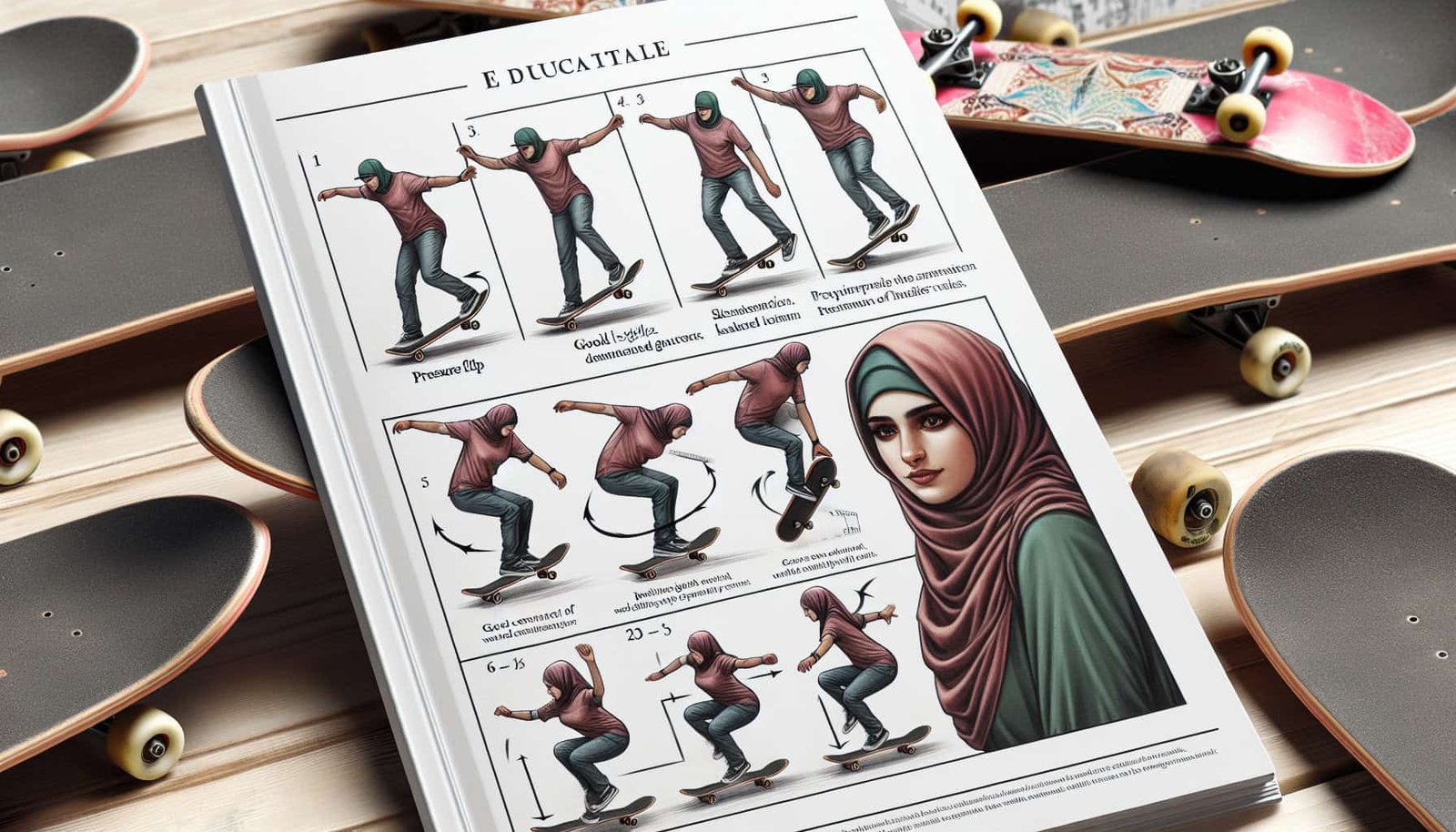Do you find yourself struggling to perfect your skateboard pressure flips and gazelles? Whether you’re a beginner looking to nail your first pressure flip or an experienced skater aiming to add more style to your gazelles, this article is here to help you improve. We’ll explore a variety of techniques, tips, and tricks that can take your skateboarding skills to the next level. So grab your board, put on your helmet, and get ready to master the art of pressure flips and gazelles.
1. Understanding the Basics
Skateboarding can be an exhilarating sport, but mastering the basics is crucial for laying a strong foundation. Let’s dive into the three fundamental aspects you need to understand: foot placement, body posture, and weight distribution.
1.1 Foot Placement
Getting your foot placement right is essential for executing tricks effectively. For pressure flips, start with your front foot angled diagonally across the skateboard, with the ball of your foot positioned near the bolts. Your back foot should be placed on the tail, slightly angled towards the edge. Experiment with different foot positions to find what feels most comfortable for you.
1.2 Body Posture
Maintaining the right body posture is key to achieving stability and control while performing tricks. Keep your shoulders square and aligned with your board, and distribute your weight evenly between your front and back foot. Bend your knees slightly to absorb impact and maintain balance. Remember to keep your gaze focused ahead to maintain a stable center of gravity.
1.3 Weight Distribution
Understanding weight distribution is essential for executing tricks with precision. When it comes to pressure flips, start by shifting your weight towards your back foot to create the necessary pop during the trick. As the board starts to flip, transfer your weight back to your front foot to ensure a smooth catch and landing. Practice finding the right balance between distributing your weight effectively for each part of the trick.
2. Perfecting Pressure Flips
Pressure flips are a popular trick among skateboarders, requiring a combination of skill and technique. Let’s break down the process into four key steps: mastering the pop, flicking the board, controlling the flip, and catching and landing.
2.1 Mastering the Pop
The pop is the initial upward motion of the skateboard, and it’s crucial to get it right for a successful pressure flip. To achieve a powerful pop, use your back foot to exert pressure on the tail, snapping it down forcefully against the ground. This snap will create the energy needed to flip the board.
2.2 Flicking the Board
The flick is the action that initiates the flip of the board. As you pop the tail, slide the outside edge of your front foot off the skateboard’s nose with a quick flicking motion. The direction and angle of the flick will determine the rotation and flip of the board, so practice finding the right technique and timing.
2.3 Controlling the Flip
Once the board starts to flip, it’s essential to maintain control over its rotation. Focus on keeping your body centered over the board and use the movement of your front foot to guide the flip. Keep your eyes on the board to gauge its rotation and make any necessary adjustments to ensure a clean flip.
2.4 Catching and Landing
As the board completes the flip, anticipate its rotation and prepare to catch it. Extend your front foot and quickly bring it back up while simultaneously leveling out the board with your back foot. Aim to catch the board with your feet positioned near the bolts, ready for a solid landing. Bend your knees to absorb the impact, then roll away smoothly for a clean finish.
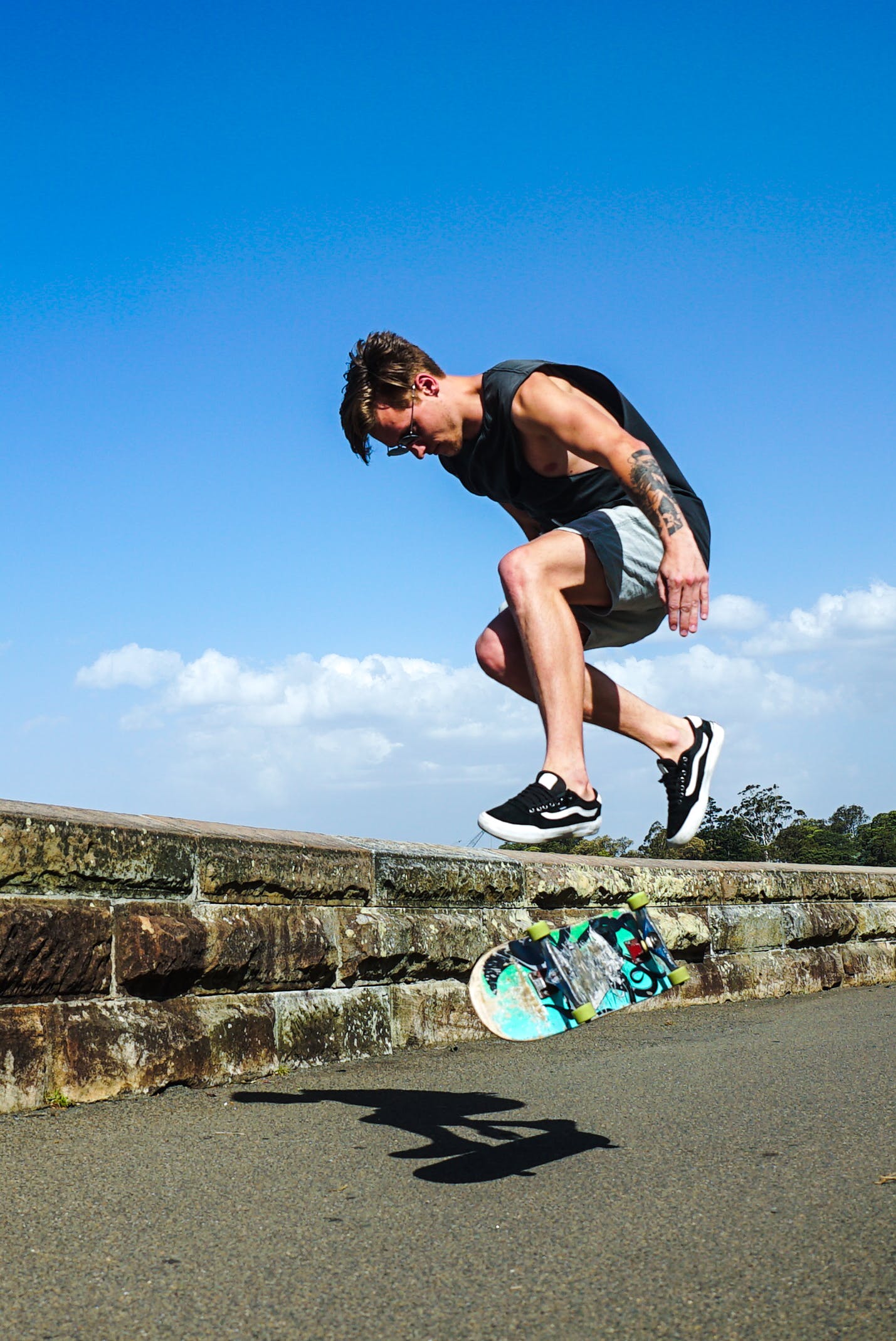
3. Enhancing Gazelles
Gazelles are a technical trick that involves a front foot extended aerial motion, requiring precision and coordination. Let’s explore the key steps to enhance your gazelles: understanding the motion, popping and jumping, extending the front leg, bringing back the back leg, and practicing speed and timing.
3.1 Understanding the Motion
Before attempting gazelles, it’s essential to grasp the motion involved. Gazelles combine a jump with an extension of the front leg, imitating the graceful leap of a gazelle. Picture the motion in your mind and analyze videos of experienced skaters executing the trick to gain a thorough understanding.
3.2 Popping and Jumping
To initiate a gazelle, begin with a slight crouch and a powerful pop off the tail. As the board leaves the ground, use your back foot to propel yourself into the air. Focus on jumping vertically while keeping your body aligned with the board for maximum control.
3.3 Extending the Front Leg
Once airborne, extend your front leg forward while keeping it parallel to the ground. This extension simulates the gracefulness of a gazelle’s leap and adds style to the trick. Maintain control of your body position and keep your eyes on the board to guide the trick’s execution.
3.4 Bringing Back the Back Leg
As you extend your front leg, simultaneously bring your back leg up towards your body. This motion helps maintain balance and control, ensuring a smooth transition throughout the trick. Practice synchronizing the movements of your legs to achieve a seamless execution.
3.5 Practicing Speed and Timing
To enhance your gazelles, focus on achieving the right speed and timing. Experiment with different amounts of power in your pop and jump to find the optimal height and distance for your desired style. It’s crucial to practice consistently to refine your timing and make the trick flow effortlessly.
4. Common Mistakes and Troubleshooting
While learning pressure flips and gazelles, it’s common to encounter some challenges. Let’s address a few common mistakes and share troubleshooting tips to overcome them.
4.1 Inconsistent Pop
If you’re struggling with inconsistent pops, ensure you’re applying enough force and snapping the tail down forcefully. Focus on finding the right balance between speed and power to achieve a consistent pop every time. Analyze your technique, practice diligently, and fine-tune your timing to improve your pop consistency.
4.2 Weak or Misdirected Flick
When your pressure flips fail to flip or flip in unwanted directions, evaluate the flick of your front foot. Ensure you’re making a swift and controlled motion with the correct direction and angle. Practice flicking the board accurately and experiment with different foot placements to achieve the desired flip.
4.3 Uncontrolled Flip
If you’re struggling to control the flip of the board during pressure flips, focus on your body posture and weight distribution. Keep your body centered over the board and maintain balance throughout the trick. Practice controlling the flip by adjusting the movement of your front foot and making subtle corrections in mid-air.
4.4 Difficulty Catching or Landing
Catching and landing can be challenging, especially when the board flips too slowly or rotates poorly. Concentrate on timing your catch correctly, extending your front foot, and bringing your back foot up immediately after the flip. Practice catching the board with precision and absorb the landing impact by bending your knees and rolling away smoothly.
4.5 Not Achieving Enough Height
When you’re struggling to achieve sufficient height in your gazelles, focus on maximizing the power of your pop and jump. Use your legs to generate upward momentum and ensure a strong push off the tail. Additionally, work on your body positioning and timing to optimize the vertical height of your jumps.
4.6 Lack of Pop in Gazelles
If you find your gazelles lacking the desired pop, ensure you’re using enough force to initiate the jump. Concentrate on snapping the tail down firmly, propelling yourself into the air with conviction. Focus on mastering the timing and power of your pop to enhance the overall execution of the trick.
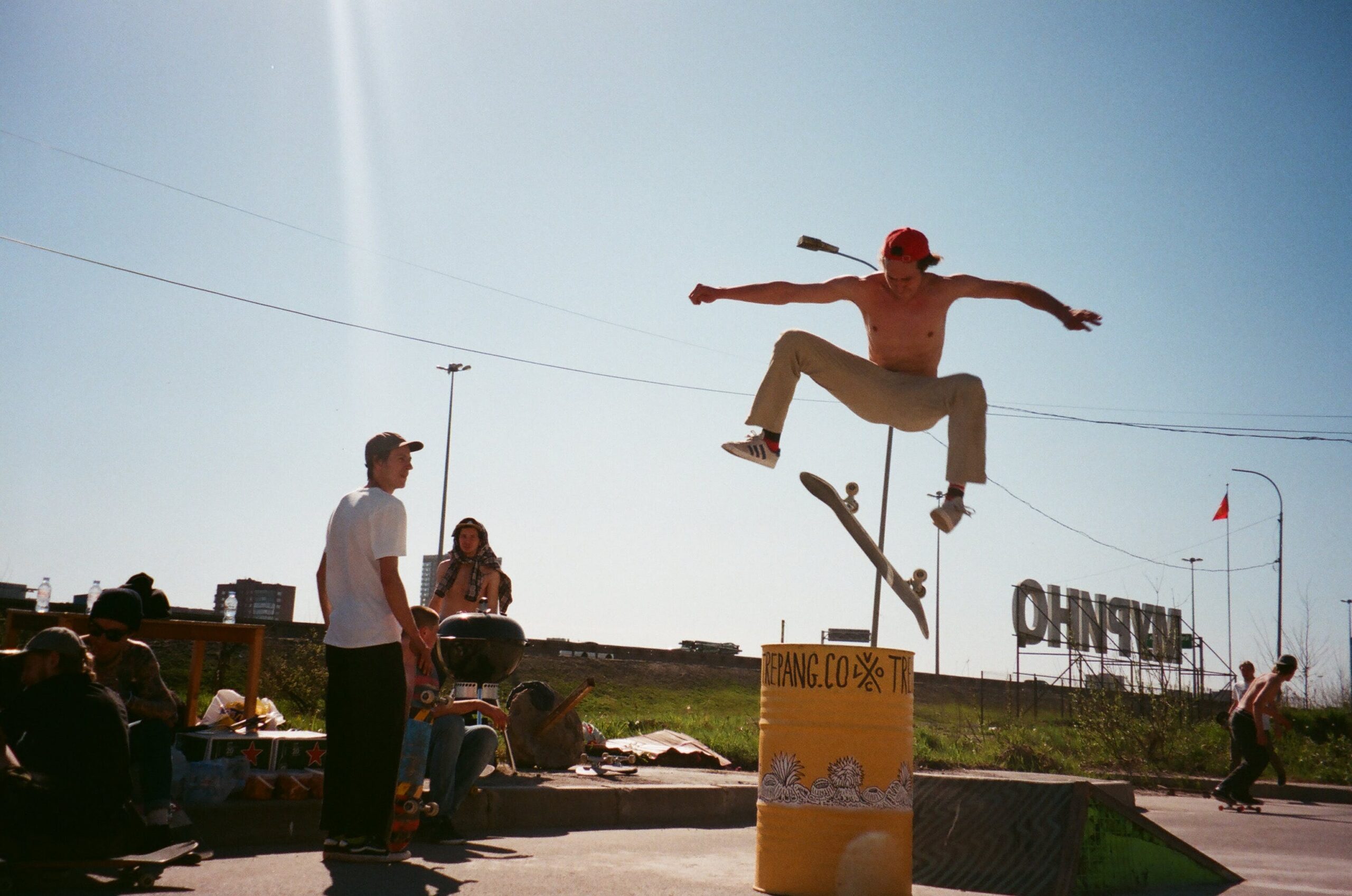
5. Tips for Progression
Improvement in skateboarding requires consistent practice and a growth mindset. Here are some tips to enhance your progression:
5.1 Start on Flat Ground
When learning new tricks like pressure flips and gazelles, it’s best to start on flat ground. Master the basic techniques and build your confidence before progressing to more challenging terrain such as ramps or stair sets.
5.2 Find the Right Stance
Experiment with different stances to find what feels most comfortable and natural for you. Whether you prefer riding goofy or regular, finding the right stance is crucial for executing tricks with confidence and stability.
5.3 Practice with Persistence
Consistent practice is the key to progression. Set aside regular practice sessions, focusing on specific tricks and techniques. Embrace the challenges and don’t get discouraged by temporary setbacks. Persistence will ultimately lead to improvement.
5.4 Utilize Slow Motion Video Analysis
Recording yourself performing tricks and analyzing the footage in slow motion can be incredibly helpful. It allows you to identify areas for improvement, including technique, timing, and body positioning. Use this visual feedback to make adjustments and fine-tune your execution.
5.5 Learn from Experienced Skaters
Seeking guidance and learning from experienced skaters can accelerate your progress. Observe their technique, ask for tips, and learn from their experiences. The skateboarding community is often willing to share knowledge and support fellow skaters’ growth.
5.6 Trying Variations and Combos
Once you’ve mastered the basics, don’t be afraid to experiment with variations and combos. Combine different tricks and incorporate your personal style into your skateboarding. This creativity will not only bring enjoyment but also enhance your overall skill set.
6. Conditioning and Flexibility
Skateboarding requires physical fitness, balance, and flexibility. Here are some areas to focus on for improved performance:
6.1 Strengthening Lower Body
Building strength in your lower body is crucial for executing tricks with power and control. Incorporate exercises such as squats, lunges, and calf raises into your workout routine to develop strong leg muscles.
6.2 Improving Balance and Stability
Skateboarding demands good balance and stability. Include exercises like single-leg balance drills, bosu ball workouts, and balance board training to enhance your overall stability on the skateboard.
6.3 Stretching for Flexibility
Maintaining flexibility is essential for executing tricks that require dynamic movements. Incorporate stretching exercises for your leg muscles, hips, and lower back to enhance your overall flexibility. Stretching can also help prevent injuries.
6.4 Core Strength for Stability
A strong core is vital for maintaining stability while performing tricks. Incorporate exercises like planks, Russian twists, and bicycle crunches to strengthen your core muscles, which will enhance your overall control and balance.
6.5 Incorporating Cardiovascular Exercises
To improve your endurance and overall fitness, include cardiovascular exercises like jogging, cycling, or swimming in your training routine. Building cardiovascular strength will help you sustain longer skate sessions and perform with more energy.
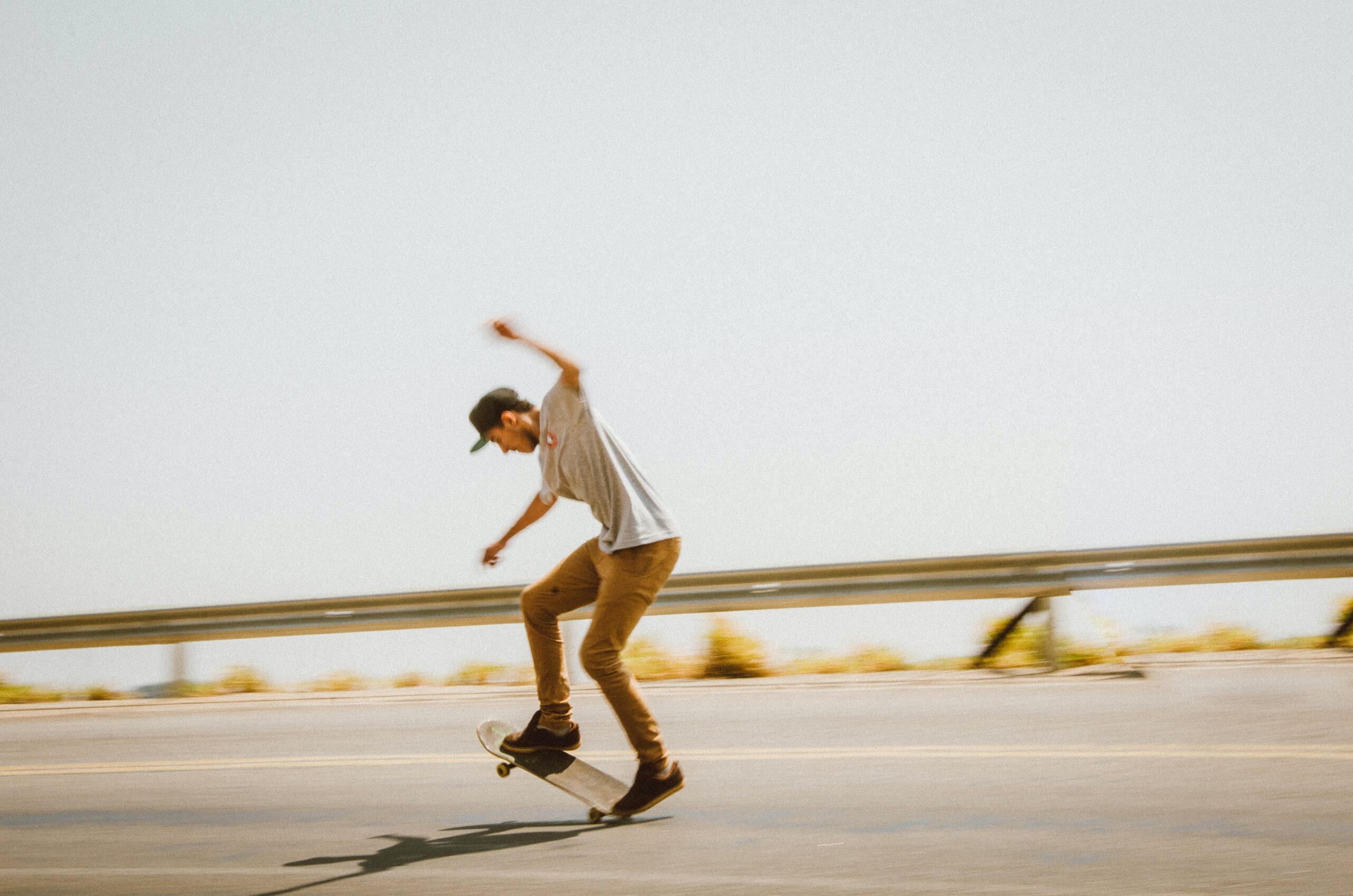
7. Determining Your Style
Skateboarding is a form of self-expression, allowing individuals to develop their unique style. Here are some considerations for determining your personal style:
7.1 Experimenting with Different Techniques
As you progress in skateboarding, experiment with different techniques, tricks, and combinations. Explore various styles of riding, including street, vert, or freestyle, to find the one that resonates with you. This experimentation will help you discover your preferences and develop your style.
7.2 Developing Personal Style
While there may be trends and popular styles within the skateboarding community, it’s essential to let your personal style shine through. Focus on incorporating your flair, creativity, and individuality in the execution of tricks. Embrace your strengths, interests, and unique movements to develop a style that reflects your personality.
7.3 Embracing Creativity
Skateboarding is an art form, and creativity plays a significant role in the progression of the sport. Embrace your creativity by exploring new lines, adapting tricks to different environments, and incorporating unique elements into your skateboarding. Push the boundaries and experiment with innovative ideas to cultivate your own artistic style.
7.4 Combining Tricks and Flows
To truly develop your style, focus on seamlessly combining tricks and creating smooth transitions between them. Rather than just executing individual tricks, aim to create a flow that showcases your ability to string tricks together fluidly. This flow will give your skateboarding a distinct and cohesive style.
8. Practicing in Different Environments
Skateboarding offers a diverse range of environments to explore. Here are some common environments and tips for practicing in each:
8.1 Skate Parks
Skate parks provide purpose-built features and ramps, offering endless opportunities for progression. Take advantage of the various obstacles available, such as rails, ramps, and banks, to practice specific tricks and refine your skills.
8.2 Street Skating
Street skating lets you navigate urban landscapes, utilizing stairs, ledges, and curbs as your playground. Practice your tricks in this challenging environment, adapting them to the surroundings. Street skating encourages creativity and adaptability.
8.3 DIY Obstacles
Building your own obstacles can be a fun way to practice and challenge yourself. Utilize materials like wooden pallets and concrete blocks to create DIY ramps, launch ramps, or even grind rails. DIY obstacles offer flexibility and allow you to design a setup that suits your needs and skill level.
8.4 Indoor Facilities
Indoor skateboarding facilities provide a sheltered environment, enabling year-round practice regardless of weather conditions. Look for local indoor skate parks or facilities equipped with ramps, bowls, and street-style obstacles. Indoor sessions offer a controlled space for focused practice and skill development.
8.5 Transition and Bowl Skating
Transition and bowl skating involve riding curved surfaces and halfpipes. Transition skating offers opportunities for speed, big airs, and flowing lines. Practice your pressure flips and gazelles in transition settings to gain confidence in maneuvering on these unique features.
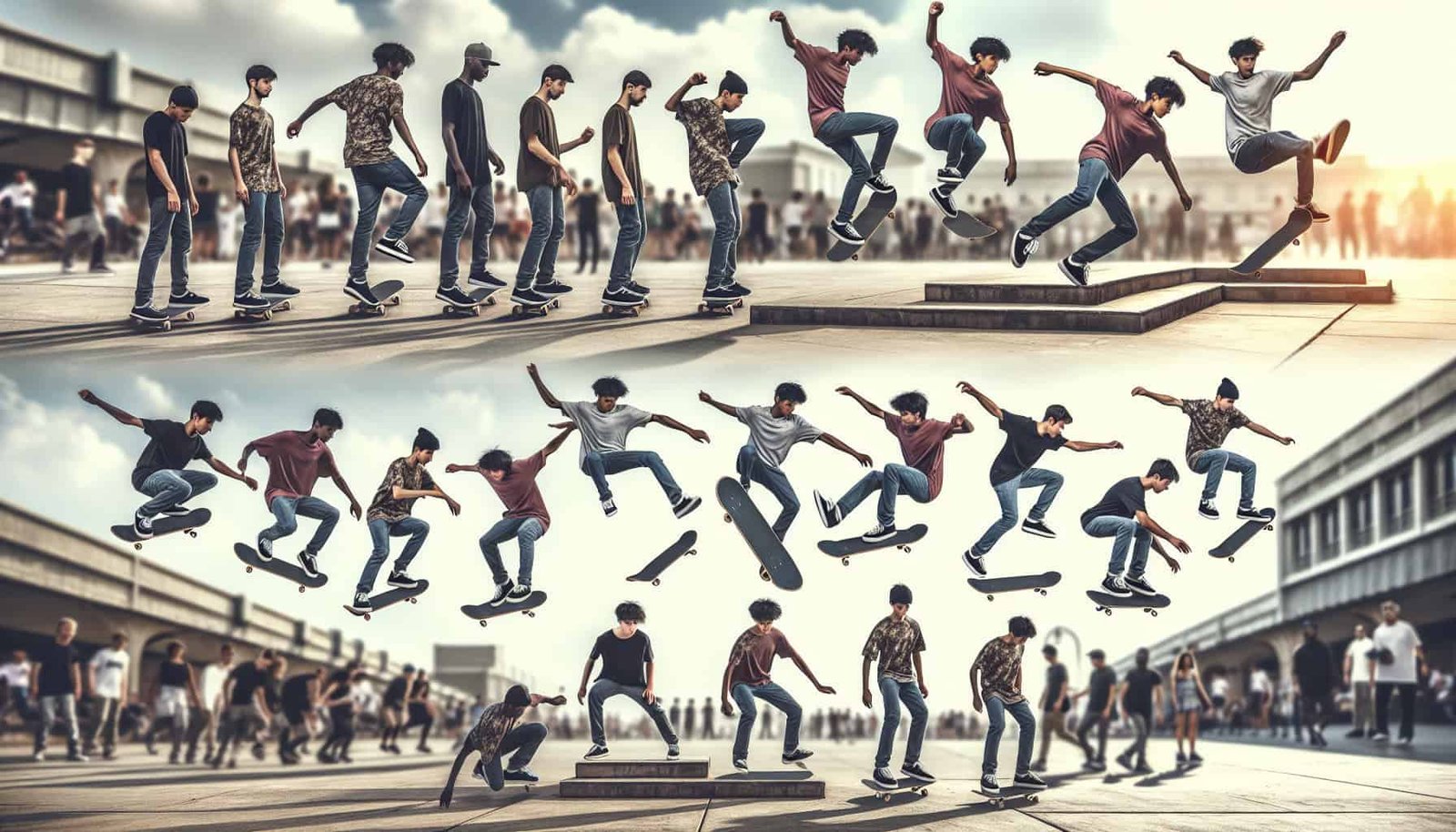
9. Safety Precautions
Skateboarding, like any sport, carries a risk of injury. Prioritize safety by following these precautions:
9.1 Wearing Protective Gear
Always wear appropriate protective gear to minimize the risk of injury. A helmet, knee pads, elbow pads, and wrist guards can provide crucial protection against falls and impacts. Protecting yourself allows you to skate with confidence and peace of mind.
9.2 Skateboarding on Smooth Surfaces
Choose skateboarding environments that have smooth surfaces, free from debris or obstacles. Avoid uneven terrain that can increase the chances of tripping or causing accidents. Smooth surfaces offer better control and allow you to focus on executing tricks safely.
9.3 Being Aware of Surroundings
Maintain awareness of your surroundings while skateboarding. Be mindful of pedestrians, traffic, and other potential hazards. Skating in designated areas and respecting local rules and regulations will help ensure your safety and the safety of others.
9.4 Starting with Simple Tricks
Progress gradually by starting with simpler tricks and gradually building up to more complex ones. Mastering the basics and developing a strong foundation will prepare you for more challenging maneuvers. Progress in a controlled manner to avoid unnecessary risks.
9.5 Falling Technique and Recovery
Learning to fall safely is essential for reducing the risk of injury. Practice falling onto impact-absorbing surfaces, such as grass or foam pits, to develop the proper technique. Additionally, focus on recovery techniques to quickly regain control and minimize the impact of falls.
10. Persistence and Enjoyment
Skateboarding is a journey of constant learning and improvement. Stay motivated and enjoy the process with these tips:
10.1 Setting Realistic Goals
Set realistic goals to measure your progress and celebrate achievements along the way. Whether it’s landing a specific trick or mastering a new style of skateboarding, break down your goals into smaller, achievable milestones that fuel your motivation.
10.2 Celebrating Small Achievements
Acknowledge and celebrate even the smallest achievements. Each time you successfully execute a trick or overcome a personal challenge, take a moment to appreciate your progress. Embracing these milestones will keep you motivated and eager to continue your skateboarding journey.
10.3 Embracing the Learning Process
Learning new tricks takes time and patience. Embrace the learning process and avoid getting discouraged by temporary setbacks or failures. Skateboarding is about perseverance and continuous growth. Each practice session offers an opportunity for improvement and further enjoyment of the sport.
10.4 Seeking Support from Skater Community
Connect with fellow skaters and seek support from the skateboarding community. Join local skateboarding groups, visit skate parks, and engage in online forums to share experiences, ask for advice, and receive encouragement. The skateboarding community thrives on camaraderie and can be a valuable resource for your journey.
10.5 Having Fun and Enjoying the Ride
Above all, remember to have fun and enjoy the ride. Skateboarding is a passion and a form of self-expression. Embrace the freedom and creativity it offers. Regardless of your skill level, skateboarding is about finding joy in the process and pushing your own limits.
Now that you have a comprehensive understanding of the basics, tips for progression, and considerations for safety, put on your helmet, grab your skateboard, and start working on improving your pressure flips and gazelles. Keep practicing, enjoy the journey, and remember that progress comes with time, dedication, and a positive mindset. Happy skateboarding!
